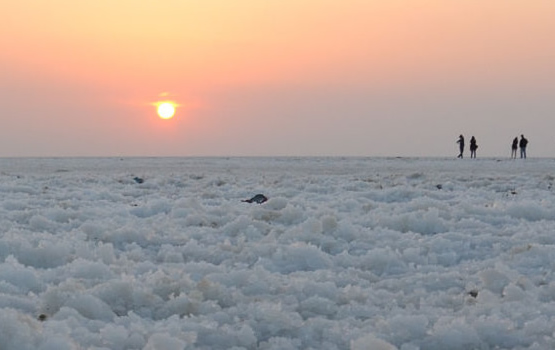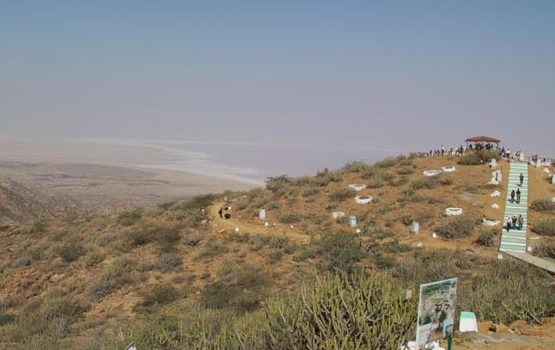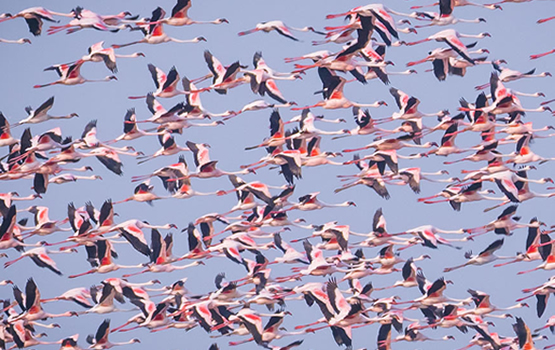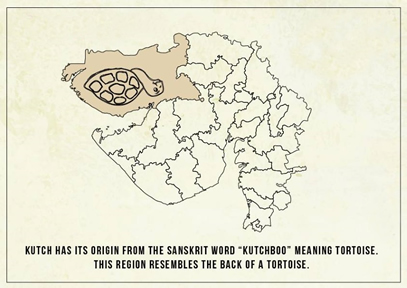Ecology & Attractions
Best Places To Visit In Kutch
Kutch is a heavenly and mesmerising destination in Gujarat, best known for hosting the Rann Festival from November to February. As the largest district of India, Kutch boasts of fantastic landscapes, mind blowing cultural traits, and awe-inspiring history

THE GREAT RANN OF KUTCH
WHITE RANN SALT CRYSTALS DAZZLE LIKE MILLIONS OF DAIMONDS UNDER THE SCRACHING SUN. A seasonal salt marshland situated in the heart of the Thar Desert with Gujarat on one side and Pakistan’s Sind province on the other, the district spans about 7,505.22 square kilometres (2,897.78 sq mt) and is one of the largest salt deserts in the world. The Great Rann of Kutch, the Little Rann of Kutch and the Banni grasslands at the southern fringe, makes up for some 30,000 square kilometres of white lands, sweeping the Gulf of Kutch at one end, and the seat of the great Indus Valley Civilization on the other, falling in southern Pakistan.
A cradle of craftsmanship, Kutch is known for its exquisite variety of weaving, patchwork, block-printing, bandhani, tie-and-dye, rogan-art and other ethnic styles of embroidery, pottery, wood-carving, metal-crafts and shell-work. The variety emerges from the enchanting terrain that provides a perfect backdrop to an extra ordinary fair. Perhaps because the landscape is so while and ochre, even a hint of colour adds a fascinating element to the rustic life of Rann.

Black Hill (Karo Dungar)
The hills are well known in locals as Kala Dungar or Panchchhamayi. From Khavda, north side 25 km, is the 460m High point called The Black Hills (Kalo Dungar) Great Rann of Kutchh is visible from here. There is an army post, as this place is nearest from Pakistan border.The connected story tells that Lord Dattatrey had visited this place & offered his body to Jackals & from that day , the temple Pujari offers Prasad to Lord Dattarey after aarti & then offers to Jackals. A bunch of Jackals appears from surrounding Black Hills to eat Prasad.

Chhari Dhand
The Chari-Dhand wetland conservation reserve is located on the edge of arid Banni grasslands and the marshy salt flats of the Rann of Kutch in Kutch District, Gujarat State in India. It is currently legally protected under the status as a Protected or Reserve Forest in India. Chari means salt affected and Dhand means shallow wetland, Dhand is a Sindhi word for a shallow saucer shaped depression.
This is a seasonal desert wetland and only gets swampy during a good monsoon, receiving water from the north flowing rivers as well as from the huge catchment areas of many surrounding big hills. It is spread over an area of 80 km2. It is in Nakhtrana Taluka, 80 km south west to the city of Bhuj, about 7 or 8 km from Fulary village and 30 km from Nakhtrana town. It is home to nearly two lakh birds with migratory and endangered species of birds flocking into the area in thousands during monsoon and winters.

20 Best Places To Visit In Kutch
- Great Rann Of Kutch – The Star Attraction
- Kalo Dungar – The Black Hill
- Topansar Lake – The Picnic Spot
- Kandla Port – The Hub Of Commercial Activity
- Mandvi Beach – Perfect For An Evening Stroll
- Kutch Museum – A Few Pages Of History
- Dholavira – A Historical Excavation Site
- Siyot Caves – A Hindu And Buddhist Attraction In Kutch
- Bhadreshwar Jain Temple – A Famous Religious Attraction
- Aina Mahal – Stunning Mirror Work
- Indian Wild Ass Sanctuary – A Day With The Wild
- Kutch Great Indian Bustard Sanctuary – Spot This Wild
- Marine National Park – Unravel The Mysterious Marine Life
- Kutch Desert Wildlife Sanctuary – A Photographer’s Delight
- Narayan Sarovar – Explore The Wild Side Of Kutch
- Lakhpat Fort – For All Things Great
- Roha Fort – A True Reminder Of The Past
- Prag Mahal – Proud Gem Of Bhuj
- Vijay Villas Palace – For The Royal In You
- Kanthkot Fort – Ancient By All Means
